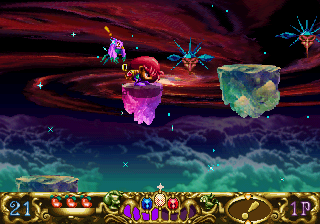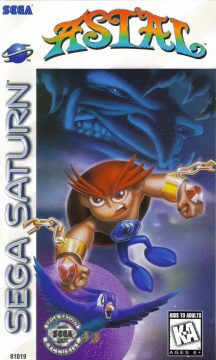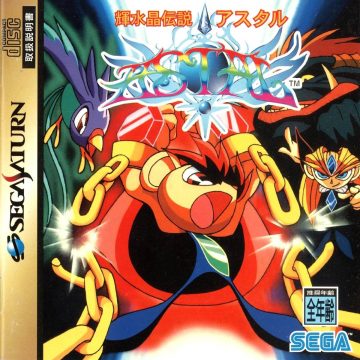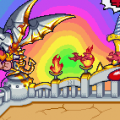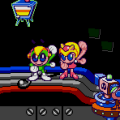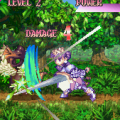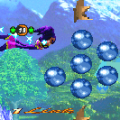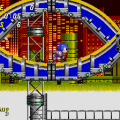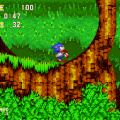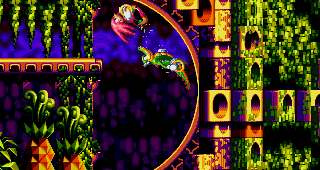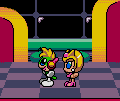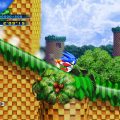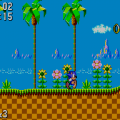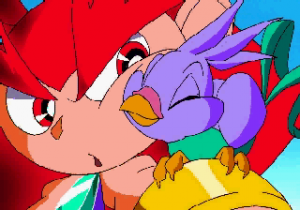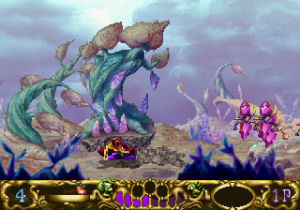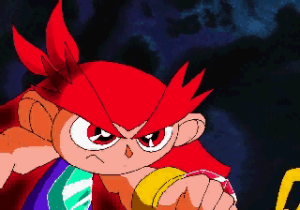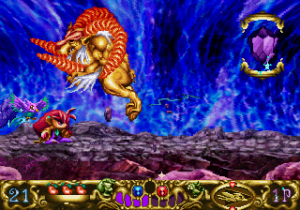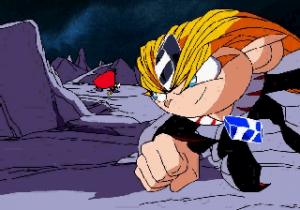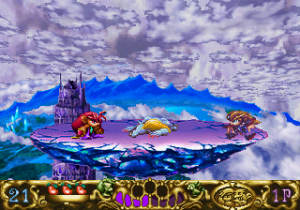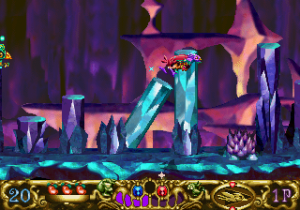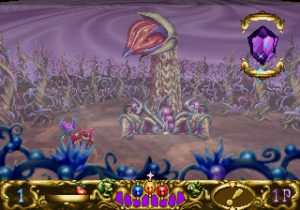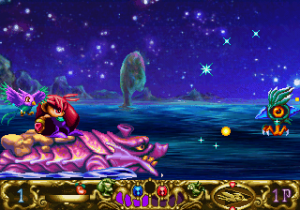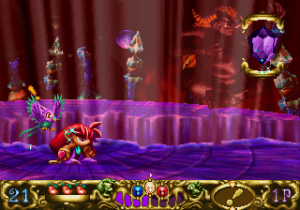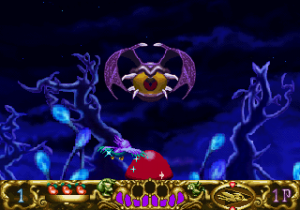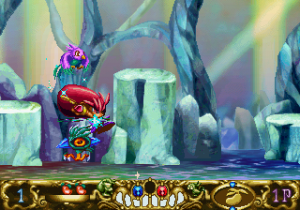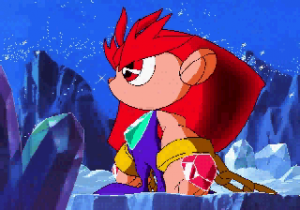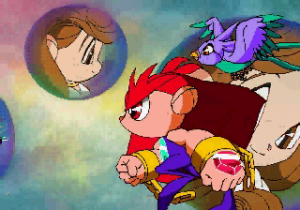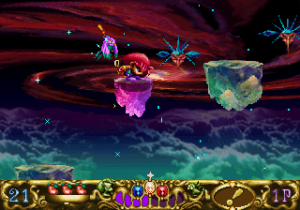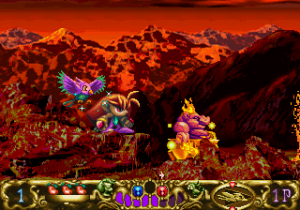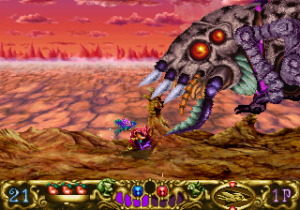by Daniel VanRoach
The late 80s and early 90s brought us a vast selection of cool dudes with attitudes. From Bart Simpson to Bill and Ted to Burger King’s mascot, Kid Vid, there was no shortage of radical kids with backwards ball caps and dark sunglasses telling us to take a chill pill. Obviously these trends were going to make their way in to our video games as well. Many tried. Jaleco’s Totally Rad and American Softworks’ Treasure Master spring to mind as examples but hardly caught on. Enter Sega. Many already know the tales surrounding Sega’s quest to create a mascot with enough ‘tude to rival Nintendo’s Mario. Many more know the success they saw with their Sonic the Hedgehog series. And many still will recall the way Sonic slipped from the spotlight as consoles hit the 32/64 bit era. It wasn’t long before the once bodacious dudes of MTV were replaced with edgy and sarcastic grunge rockers and Sonic’s mighty blue spikes seemed so, “last week” as all the cool kids were saying in 1995. With Sega Saturn’s debut and no hedgehog to be found on the console’s launch lineup Sega was clearly looking for another new character to rival the Pretendo and that new fangled Plaything.
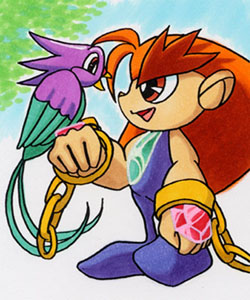
1995 brought us one of Sega’s new first party games, Astal. The eponymous hero boasts long red hair, bushy eyebrows, what appears to be a lavender body suit, gigantic forearms, and broken handcuffs on each wrist, as he journeys through a dream-like land full of crystals fanciful creatures with his companion, a purple cockatoo. Hip, this guy was not. A 2D platformer with vibrantly colored, hand drawn sprites and spoken dialogue from the characters, Astal stood out alongside 16 bit games on the Sega Genesis and Super Nintendo not only in terms of technical quality but also as a decidedly not-so-trendy title.
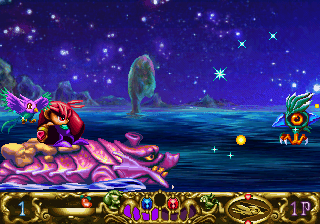
Astal (Saturn)
The story concerns the Goddess Antowas creating a world known as Quartilla out of jewels. She then populates her world with two people also made from jewels; Leda, who can create life and Astal, who protects Leda. Satisfied with her work, Antowas sleeps. Soon, the Demon God, Jerado creates his own being, Geist. He sends Geist to capture and imprison Leda on the ocean floor. Astal, ever protective of Astal pursues her and destroys the ocean in his haste. This destruction awakens Antowas who defeats Jerado and Geist and exiles Astal to the moon for his overzealous oceanicide. She then returns to sleep. The game then switches to an instrumental music video where… Astal, still chained to the moon, hears Leda cry out his name. He breaks his shackles and returns to their planet to find her. Once there, he encounters a group of jewel monsters guarding a curious purple bird in a cage. While not specifically interested in saving the bird, he defeats the beasties and frees the bird, which serves as his unwanted sidekick throughout the game.
After certain levels the story progresses more with cut scenes explaining how Jerado reclaims his power by feeding off the souls of bosses Astal has beaten. After winning a battle with Geist, who has secretly been trailing Astal since the beginning, Jerado destroys him and grows to his full power. After eventually defeating Jerado it is revealed that the bird that follows Astal around is in fact Leda after being transformed by Jerado’s magic. Like every Disney movie ever made, Astal discovered the greatest power of them all, love, and is given the power to create life as well.
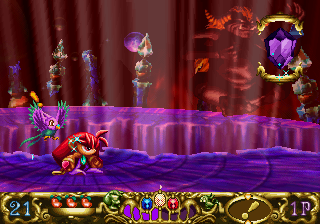
Astal (Saturn)
The game mechanics are fairly diverse. Astal can walk, dash, duck, and jump. His main methods of attack are a grab/throw maneuver (think Kirby’s throw technique), wherein he grapples a bad guy and chucks them over his shoulder; a ground punch, which causes a mini-earthquake; a mid air two fisted overhead punch; and the ability to inhale deeply and exhale with a mighty burst of air (also, vaguely Kirby-esque). In addition, the bird, who follows Astal on his journey, can be used to retrieve health-ups, as a weapon when a meter is fully charged, or controlled by a 2nd player in a number of ways. Since he’s a miniature strongman, he can also pick up certain gigantic objects and throw them, although this technique isn’t much taken advantage of. To break up any monotony there’s also a boss battle where Astal takes a back seat and the bird does all of the fighting.
Visually, the game looks gorgeous. The 2D hand drawn sprites are colorful and highly detailed with smooth animation and alternate palettes depending on the lighting of the surrounding environment. The game will also zoom in and out on the action to shift focus to the scale of particularly large creatures and objects. At the end of each level, Astal raises his fist into the air and yells, “Yatta!” ala Chun-Li and stands out as something far removed from the finger waving 16-bit hedgehog before him. (In the English version, the important voices are translated into English, but some of the Japanese remains, like the “Kuso!” cry whenever Astal gets killed.) The world of Quartilla is an otherworldly bright, glistening land of contorted periwinkle foliage and a misty, deep violet atmosphere. Inhabiting this land is an odd assortment of orchid, bat-winged eyeballs, prehistoric looking fish, mythological beasts, and heliotrope, princess cut jewel creatures. Essentially, nearly everything on the planet comes in some shade of purple. Every level from the River of Dreams to the Volcanic Valley is a treat to look at.
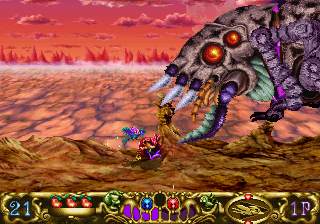
Astal (Saturn)
The music, streamed as redbook audio from the CD, is equally beautiful. The digital strings and woodwinds are very calming and mellow like a lullaby. Occasionally the soundtrack will switch abruptly jerking you into a boss battle with the subtlety of a record skipping. Astal’s voice can be a tad repetitive, particularly his loud yell when tossing objects and enemies but it’s the bird’s warning call that will really get on your nerves. Whenever the bird can be used, hundreds of times per level, it will let out a multi-note whistle to alert you. Hidden gems, the opportunity to attack, when low on health, whatever. It happens so much you continue to hear it long after you’ve turned off your Saturn. Ocarina of Time‘s Navi will never seem irritating again after this.
The level design is where the game falls a little flat. Despite their aesthetic beauty, the incredibly simple, left-to-right levels are rather dull, especially when compared to the labyrinths and loop-de-loops of older Sega side scrollers. Suffice to say, the game’s primary failing is that it is linear to a fault. Another major downfall stems from the fairly simple combat. Most enemies can be quickly defeated with a simple toss, punch, or gust of hot air. Many will not attack unless Astal walks directly into them, as even landing on top of most will cause our hero no harm. Should Astal take any damage his bird pal can be called upon to deliver delicious fruit to restore some or all of his health, depending on the color of the fruit. If Astal is still defeated, he can continue from the beginning of the stages. In other words the challenge comes more from timing jumps and memorizing attack patterns than anything else. Some of the later boss stages are fairly challenging, particularly the battle with Geist, but even those become pretty predictable after a few shots. The game’s not “easy” per say but can be beaten without too much frustration over the course of an hour or two.
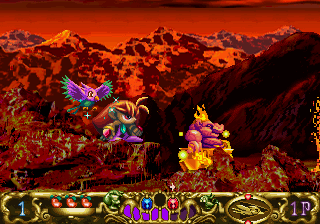
Astal (Saturn)
Despite the dazzling visuals and fairly simple play controls, the game just didn’t sell. Gamers may have not wanted bodacious surfer dudes anymore but they clearly didn’t want whatever the hell Astal was either. Possible explanations are that by 1995 games like Donkey Kong Country and Killer Instinct, not to mention the upcoming film Toy Story, piqued gamers’ interest in computer-generated graphics. This was also at a time when new fully 3D polygonal games were just starting to become mainstream. One would have assumed the CD based Saturn should have had more pre-rendered 3D titles than its cartridge predecessor but despite how pretty Astal looked he was quite flat compared to Vectorman.
One of the main points against it was Sega’s highly criticized surprise release date of their Saturn console. With Astal being one of the few games available 4 months before the system was expected to hit the market, many didn’t have the 400 dollars to buy the console they weren’t planning on buying that soon. Considering the Ultra64 was a year away and the cheaper PlayStation was only months away many just didn’t bother with the Saturn. Not to mention some stores didn’t carry the machine or software as a protest to Sega’s surprise limited release.
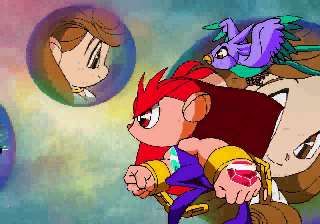
Astal (Saturn)
Finally, the American release of the game was peculiar in that it had no logo on the spine. The fact that the four major American retailers carrying the game would have to have it displayed with the front cover facing outward – complete with an Americanized illustration of Astal, looking dorkier than usual – coupled with the fact that the game never had a European release surely hurt the game’s sales.
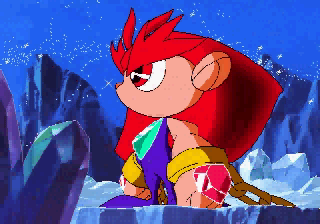
Astal (Saturn)
The game seems to be Astal’s only appearance in the electronic world. Other forgotten Sega characters have made occasional appearances from Alex Kidd’s inclusion in Sega Superstar Tennis to the Bonanza Bros. in Sonic & Sega All-Stars Racing to Ristar in Segagaga, many old characters have occasionally found their way into cameo appearances. Other than a quick cameo in Segagaga, Astal has not. Oddly, buried within the game’s files there is a single sprite of Nintendo’s Super Mario looking a bit nervous. can’t explain that either. Maybe the gaming world doesn’t remember Astal, but comic book artist Patrick “Spaz” Spaziane seems to. He’s made a number of cameos hidden in the panels of the Sonic the Hedgehog comics making readers who happened to notice him wonder who or what he was supposed to be anyway.

Whatever the reason the game was overlooked and despite its relative simplicity, Astal is an enjoyable title that really shows off the 2D power of the Saturn. With the game only available on Saturn you may never play this game unless Sega decides to re-release it somewhere. Which is a shame. The charming characters may not have been radical dudes and faded into obscurity along with Saturn’s Bug and Clockwork Knight, but they certainly made for an entertaining game. Even though it was one you’d beat in an afternoon and possibly never play again.
